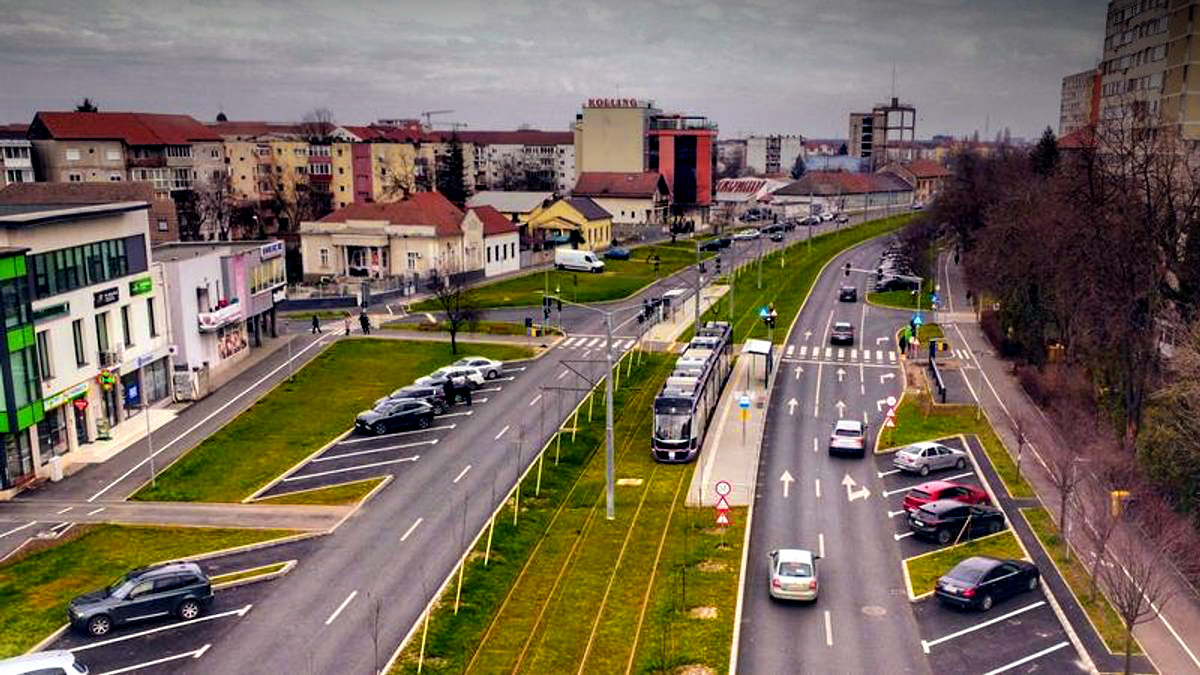
There is a known correlation between the traffic in a city and the level of pollution, as has been shown in several studies. While the exhaust emissions are directly linked to the number of cars and this figure increases in time, there are also the non-exhaust emissions that raise additional questions and need complementary solutions.
A case study – Timisoara “Cetatii” Boulevard
We picked Timisoara for this topic for two reasons : The city hall installed in 2022 a dense network of air quality sensors so we have a lot of data to look at -and- Major infrastructure rehabilitation works took place in the last 4 years, leading to better roads, less dust and increased green spaces, acting as barriers against dust and air pollution. The administration moved forward on impact initiatives such as expanding green spaces and promoting eco-friendly public transportation. One such example is the “Cetatii” Boulevard:
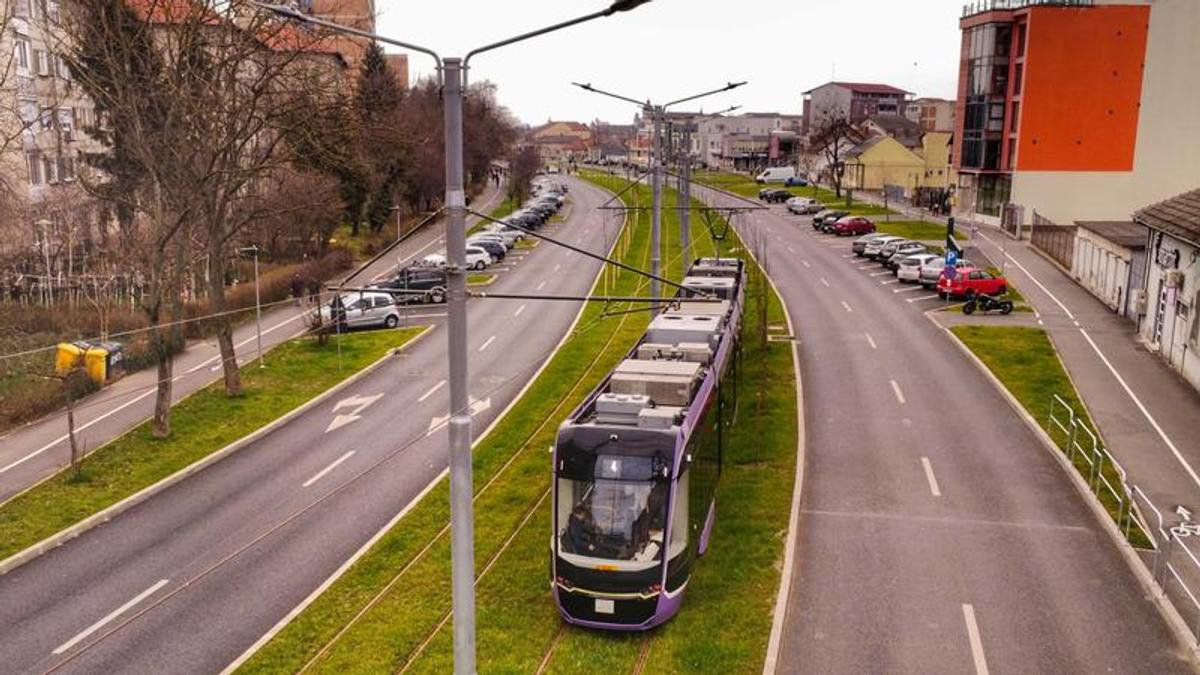
Urban mobility in Timisoara
Timișoara, a city in western Romania with a metropolitan population of around 400,000, is renowned for its architecture, abundant green spaces, and vibrant cultural scene. As of the latest data, Timișoara has approximately 250,000 registered vehicles. This includes a combination of passenger cars, commercial vehicles, and other types of road transport. The overall vehicle count in Romania is growing, with a noticeable increase in new registrations, reflecting a broader trend across the country where vehicle registrations continue to rise year over year.
Emissions are therefore directly linked to the number of cars and it’s widely agreed that a solution implies encouraging efficient public transportation and using better technologies, including more efficient engines and electric vehicles. Advancements in technology is an ongoing process and progress is being done constantly, ultimately resulting in major improvements of any issues related to emissions and impact on air quality.
The non-exhaust emissions (NEEs)
NEEs are traffic related particles that result from the wear and friction of the various surfaces (road, tires, brake pads). They also includes the particles deposited on the roads and which can be resuspended by traffic motion or by wind. All these sources contribute to the bigger picture of pollution caused by traffic. In order to effectively characterise the pollution with particulate matter generated by NEE, it is important to begin to understand the source mechanisms. And this remains a real challenge because there are several parameters that influence the phenomenon.
Of major concern are the so called “dirty” roads. In villages, roads can get dirty if tractors or other agricultural machines enter the public roads with mud on their wheels. Normally this doesn’t apply at city level, however if infrastructure is poorly maintained, it will happen. This was the case with “Cetatii” Boulevard prior to its modernisation, prior to 2021:
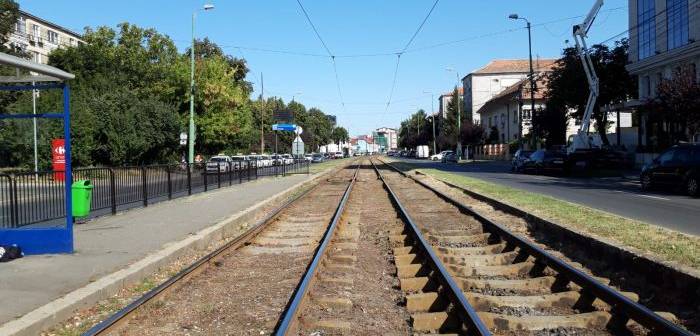
Unmaintained areas exposing soil to wind, improper railways generating dust with every passing tram, cracked asphalt, insuficient traffic lanes leading to slow traffic and more particles from breaks.
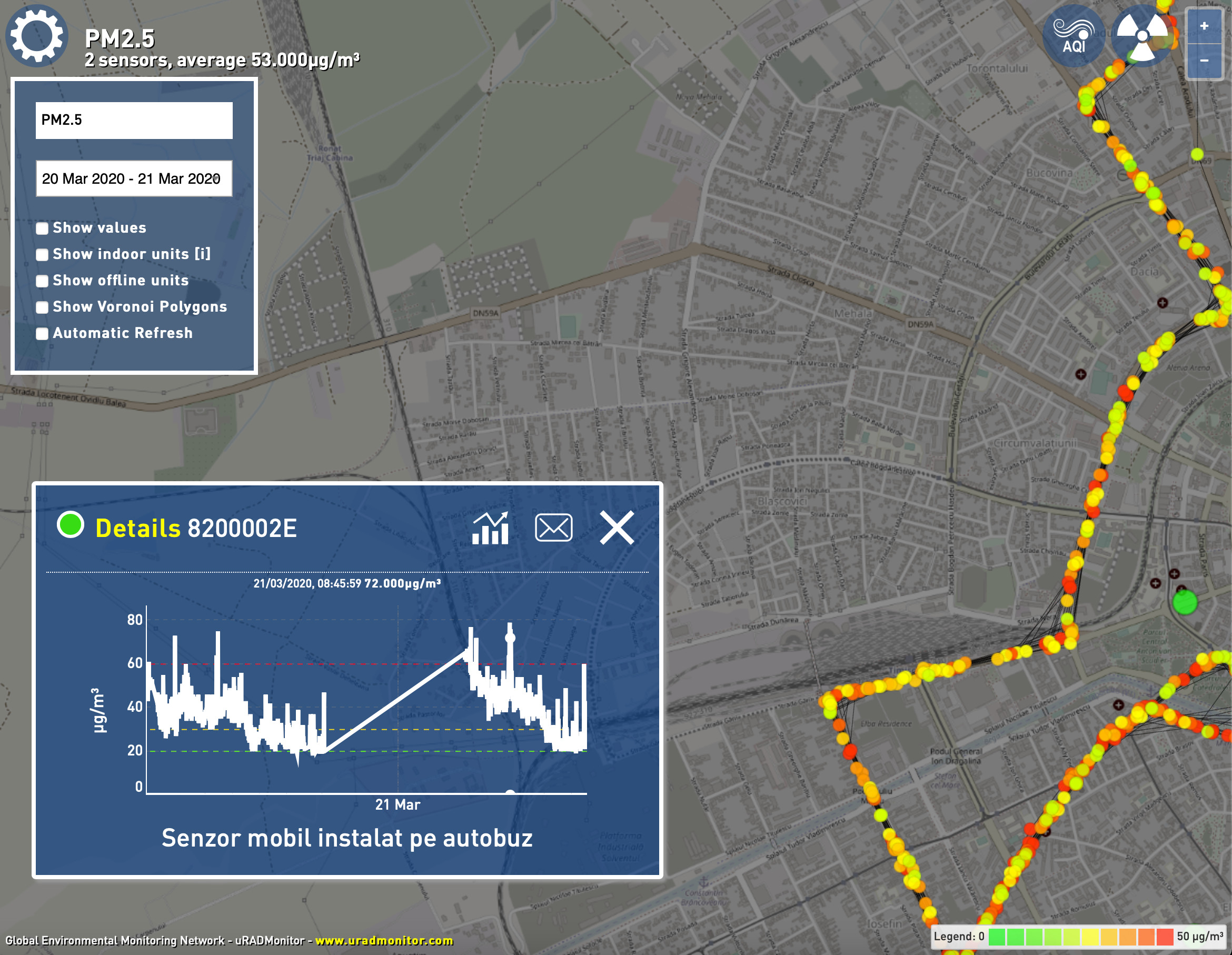
Looking back both on pictures and sensor data, we see how much the city evolved in these last years.
Air Quality Sensor data in Timisoara
The city hall installed automated sensors near major boulevards and the data is made available on the Open Data Portal. The sensors are uRADMonitor MODEL A3, an advanced multi-parameter IOT sensor that tracks a large number of parameters in real time.
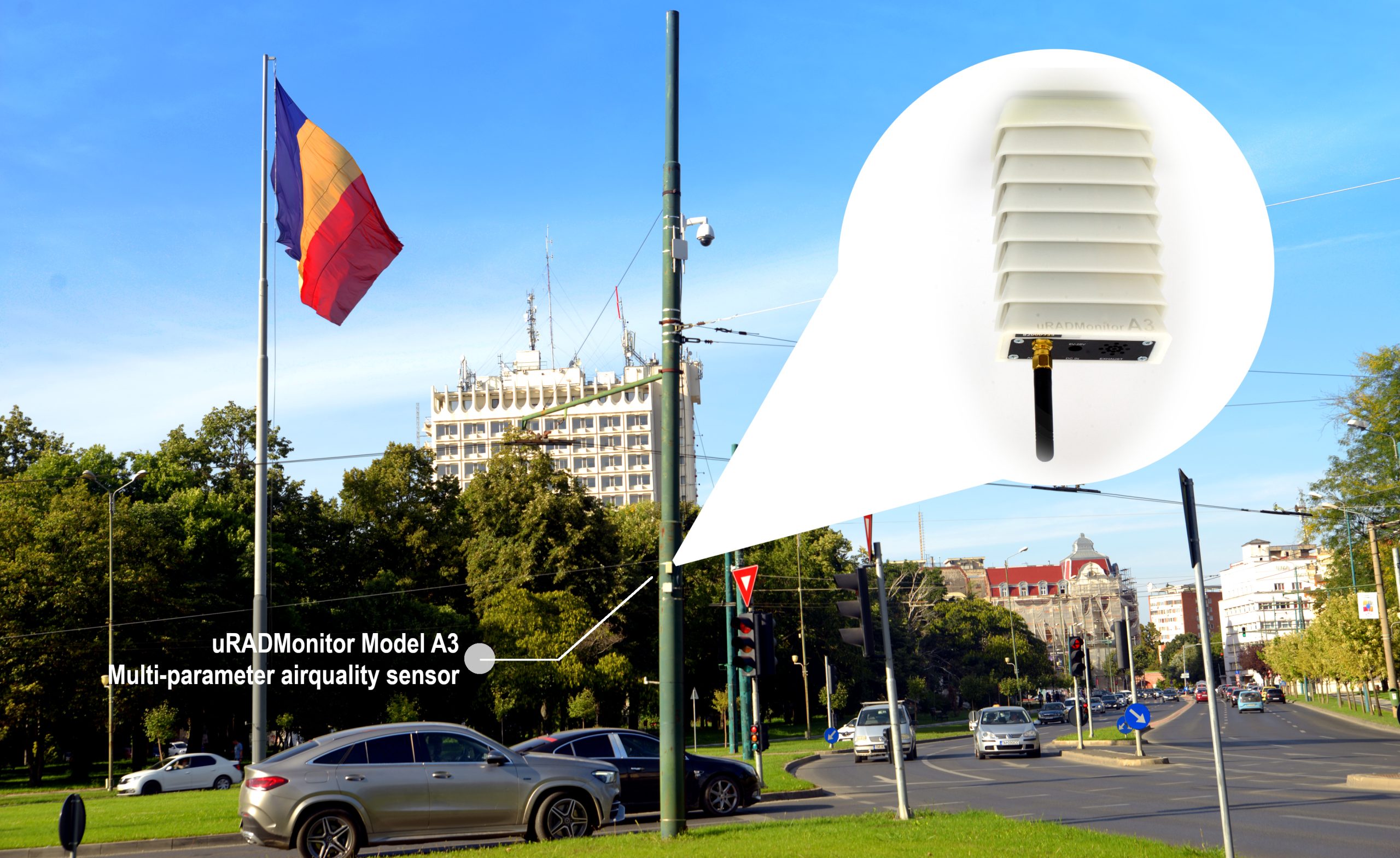
Timisoara also has a fleet of public transportation vehicles, equipped with mobile air quality sensors, the same uRADMonitor A3 but connected to a GPS system to have the mobile coordinates mapped to the air quality data. One bus line often passes on both ends of the new boulevard, registering low concentrations of particulate matter. Here is the data for the last 10 days, showing most of the city in green. This is the same mobile sensor (8200002E) that back in 2020 was in red warning colours due to high pollution.
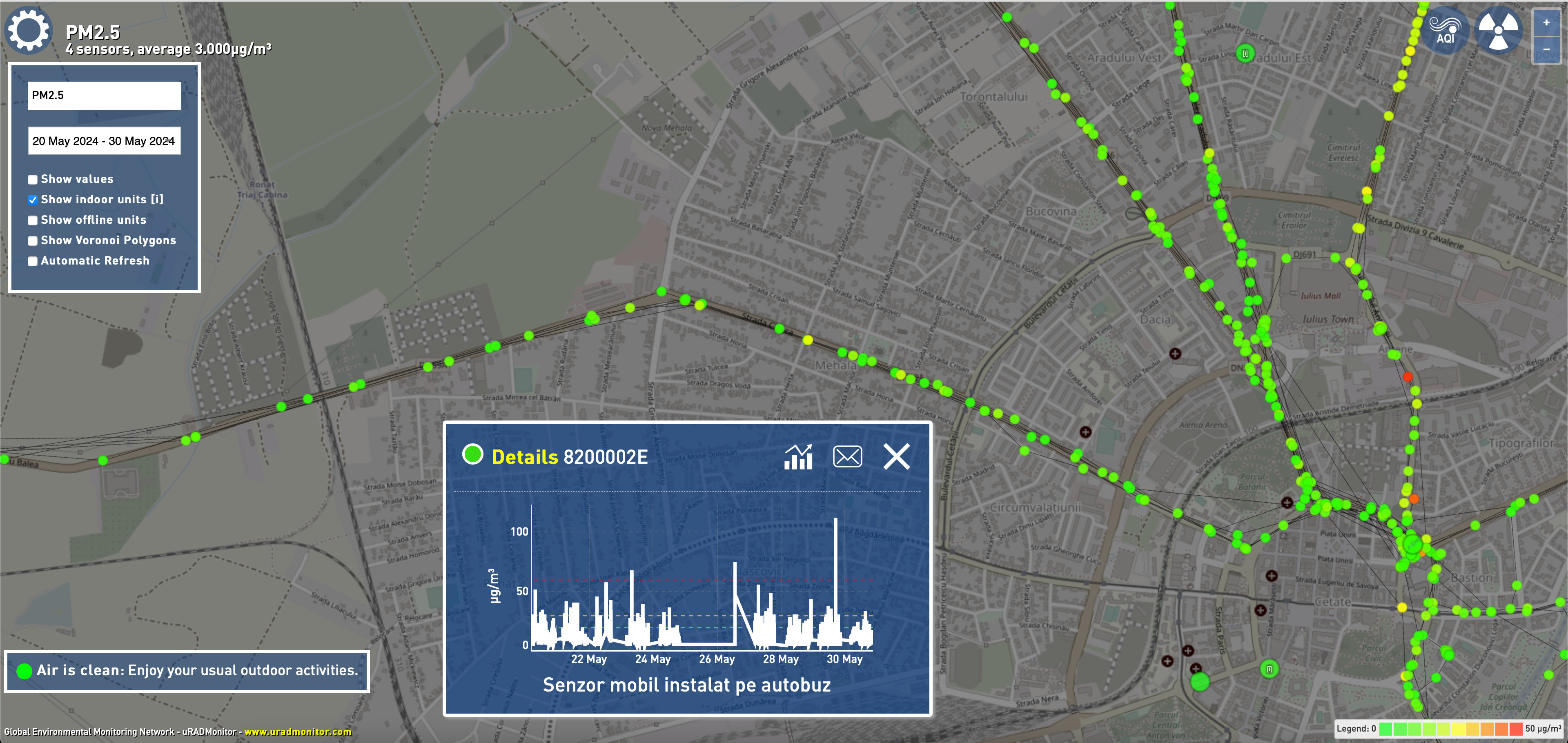
Conclusions
Low readings on particulate matter (PM) sensors in urban areas are often correlated with clean and modern infrastructure and the presence of vast green spaces. Trees and plants play a crucial role in improving air quality by acting as natural air filters. They capture particulate matter on their leaves and bark, reducing the concentration of pollutants in the air. Green areas also promote better airflow and reduce the urban heat island effect, which can contribute to lower levels of particulate pollution. Consequently, cities with extensive parks and tree-lined streets typically show lower PM sensor readings, indicating cleaner and healthier air.
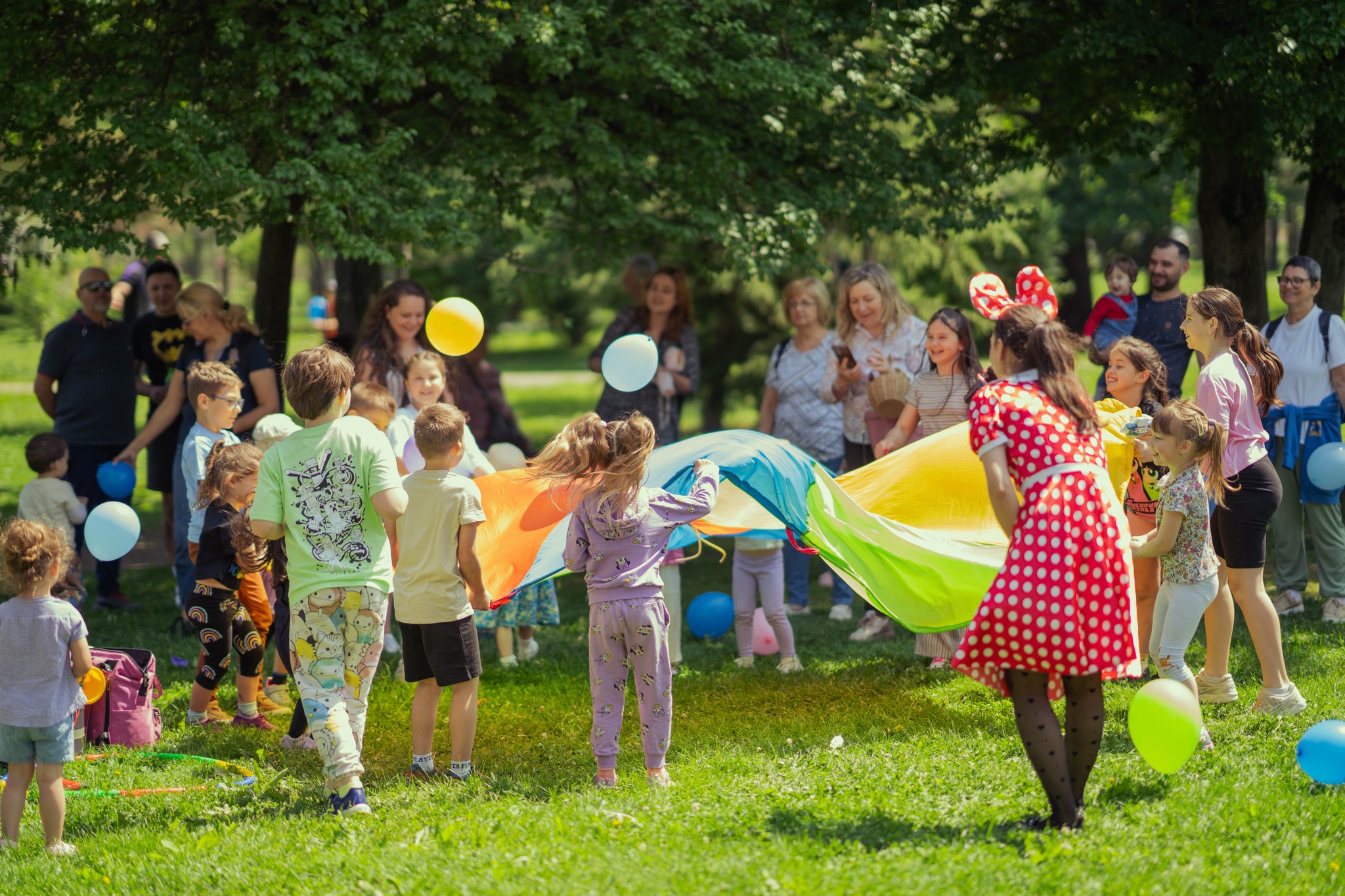
Today, Timisoara is green not only on the uRADMonitor sensor map, but also on its beautiful streets, thanks to its many trees and flowers and its parks. Modern infrastructure and clean roads significantly enhance the quality of life in one of Romania’s most vivid urban environment. Well-maintained roads now reduce traffic congestion and the risk of accidents, ensuring smoother and safer travel. Modern infrastructure, such as efficient public transportation systems and well-designed pedestrian pathways, promotes mobility and accessibility, reducing reliance on personal vehicles and lowering emissions. Clean roads, free of litter and pollutants, contribute to a healthier environment by reducing airborne dust and particulate matter. Additionally, aesthetically pleasing and functional urban landscapes foster a sense of community, encourage outdoor activities, and enhance the overall well-being of residents.
codemore code
~~~~